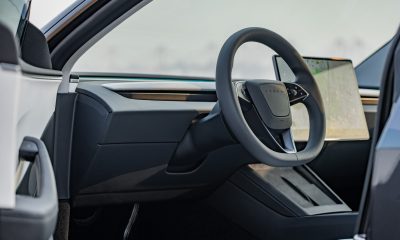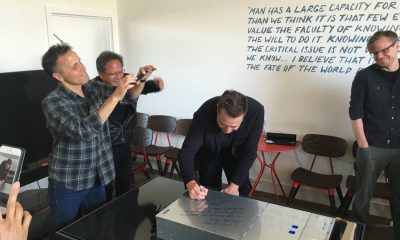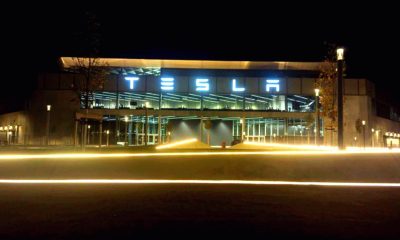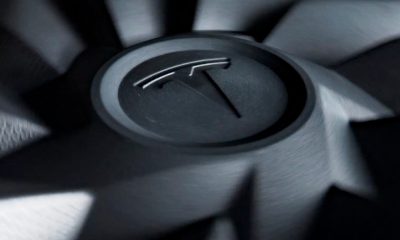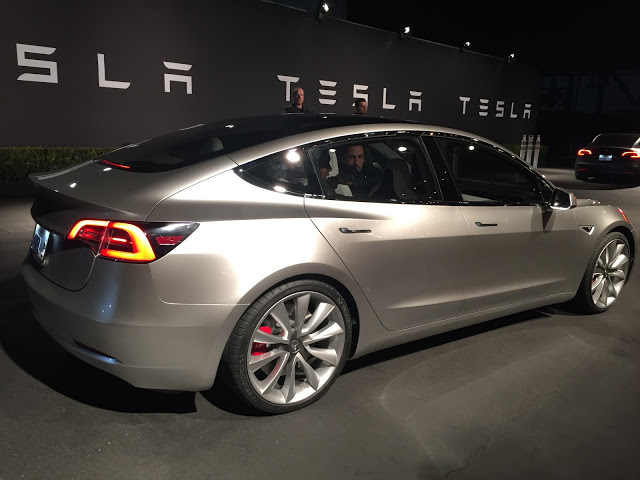
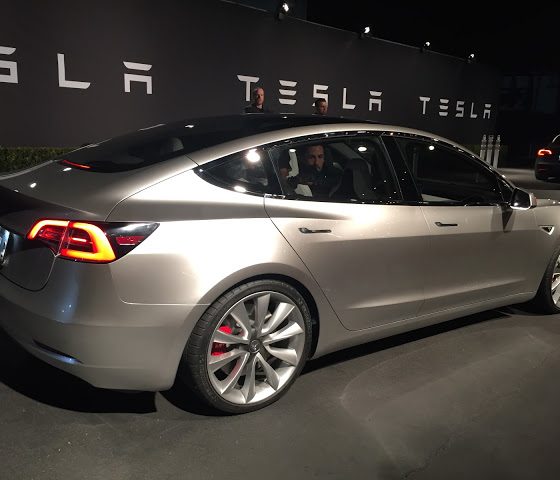
Energy
Tesla Model 3 battery options to top out at 75 kWh with likely 300+ mi. range
Tesla CEO Elon Musk has revealed that Model 3 battery options will max out at 75 kWh due to the vehicle’s shorter wheelbase, relative to the larger Model S and Model X which can accommodate up to a 100 kWh battery pack size.
The highly anticipated mass market electric car will be using Tesla’s newest high performance ‘2170 cell’ that’s currently being produced at Gigafactory 1 in Sparks, Nevada, and being used in Tesla’s Powerpack and Powerwall energy storage systems. Beyond having a larger form factor than the existing 18650 battery cell being used in Tesla’s existing vehicle fleet, the 2170 lithium-ion cell that boasts a higher energy density by as much as 30%.
ALSO SEE: Tesla Gigafactory 1 is beginning to look like a small city [Mar. 2017 photos]
Though Tesla has not specified the maximum driving range for Model 3, one can expect that a “Model 3 75D” would have a range higher than the heavier and larger Model S with 75 kWh pack. Looking at the Model S 60 which is capable of 210 miles of range, or .285 kWh/mile, one can assume that a smaller and lighter Model 3 would consume roughly .242 kWh/mile. Based on that estimate, a rear wheel drive Model 3 with 75 kWh battery pack will top out at 310 miles of range per charge. By comparison, the Chevy Bolt has a 60 kWh battery pack and is capable of achieving 240 miles of driving range, or .250 kWh/mile.
The shorter wheelbase only allows for a 75 kWh pack in Model 3 at current cell/module energy densities
— Elon Musk (@elonmusk) March 24, 2017
Model 3 to lead Chevy bolt with more range
It’s worth noting that the Chevy Bolt has a much higher drag coefficient than the Tesla Model S, which shares a similar aerodynamic design as the Model 3. The Bolt’s drag coefficient is .32 while the Model S has a drag coefficient of .24.
The lead designer of the Chevy Bolt, Stuart Norris, claims, “It’s a disaster for aero(dynamics)”, according to Digital Trends. The Model 3 on the other hand, has a very fluid design and will undoubtedly out-class the Chevy Bolt in aerodynamics and range. The more efficient Model 3 will allow the vehicle to have less battery for the same range.
Oh so little faith
— Elon Musk (@elonmusk) March 24, 2017
Musk later stated that the Model 3 would offer more range than the Chevy Bolt, which we are not surprised by. Musk also claims that cars like the Chevy Bolt are sold at a loss and help the manufacturer comply with emission requirements. While Tesla does generate revenue from emissions credits, they aren’t considered to be stable sources of income.
“What you will see our competitors do is they will limit their production, and they will only sell in ZEV states or almost entirely in ZEV states. That doesn’t scale. That will take them to maybe 40,000 units or 50,000 units a year, best case, but we’re talking about doing 500,000 units a year.” – Elon Musk Q3 Earnings Call
Musk tweeted a video showing a Model 3 release candidate driving down a local street today. The company says it’s on track to begin production of Model 3 in July. Tesla is expected to throw a Model 3 ‘Part 3’ launch event sometime in June ahead of planned production.
Energy
Tesla recalls Powerwall 2 units in Australia
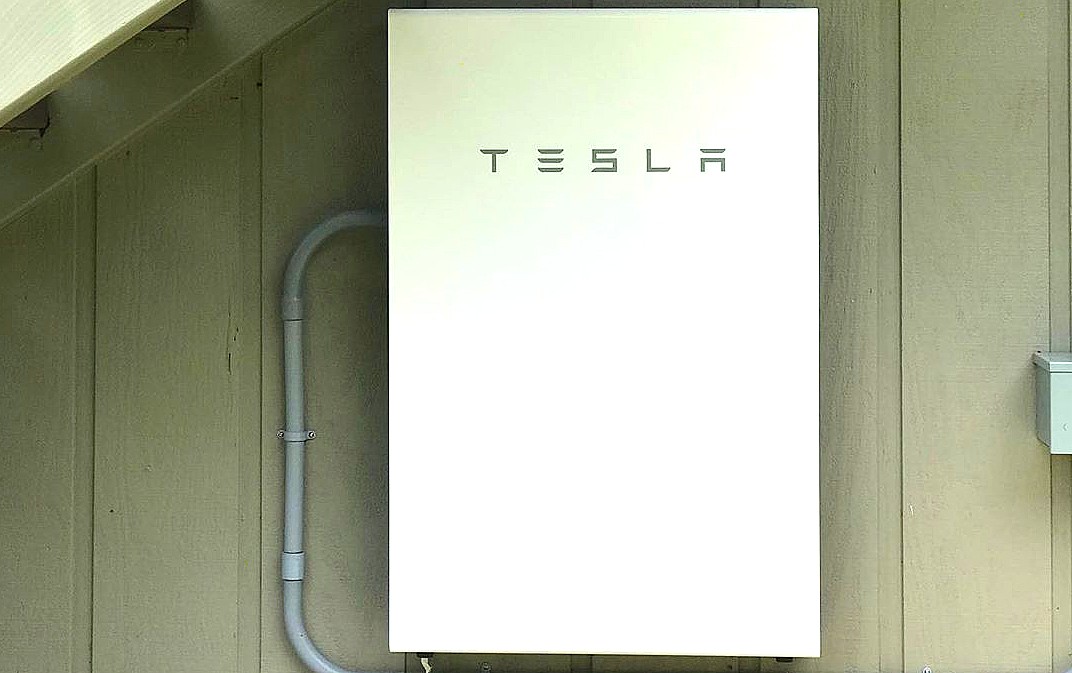
Tesla will recall Powerwall 2 units in Australia after a handful of property owners reported fires that caused “minor property damage.” The fires were attributed to cells used by Tesla in the Powerwall 2.
Tesla Powerwall is a battery storage unit that retains energy from solar panels and is used by homeowners and businesses to maintain power in the event of an outage. It also helps alleviate the need to rely on the grid, which can help stabilize power locally.
Powerwall owners can also enroll in the Virtual Power Plant (VPP) program, which allows them to sell energy back to the grid, helping to reduce energy bills. Tesla revealed last year that over 100,000 Powerwalls were participating in the program.
Tesla announces 100k Powerwalls are participating in Virtual Power Plants
The Australia Competition and Consumer Commission said in a filing that it received several reports from owners of fires that led to minor damage. The Australian government agency did not disclose the number of units impacted by the recall.
The issue is related to the cells, which Tesla sources from a third-party company.
Anyone whose Powerwall 2 unit is impacted by the recall will be notified through the Tesla app, the company said.
Energy
Tesla’s new Megablock system can power 400,000 homes in under a month
Tesla also unveiled the Megapack 3, the latest iteration of its flagship utility scale battery.
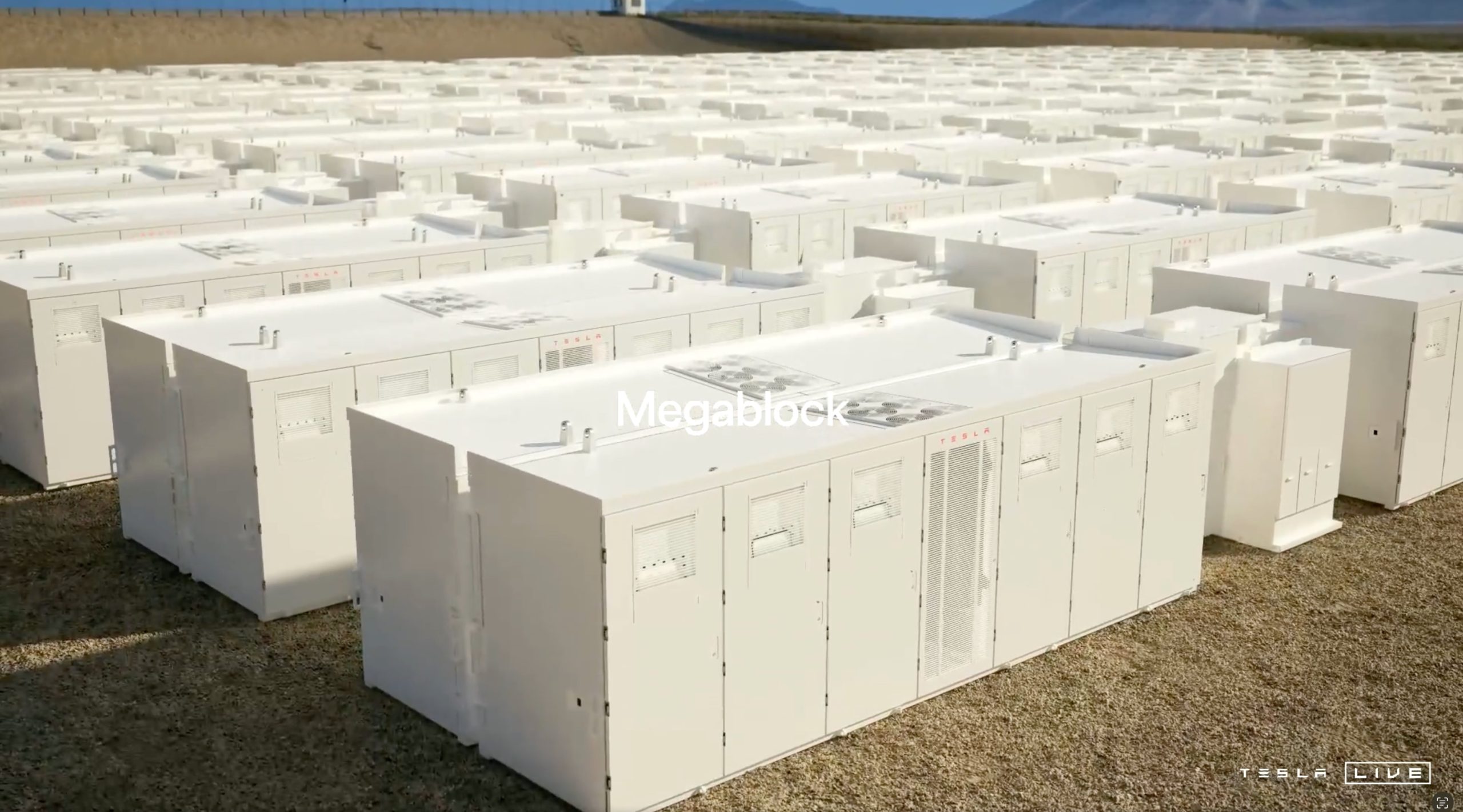
Tesla has unveiled the Megablock and Megapack 3, the latest additions to its industrial-scale battery storage solution lineup.
The products highlight Tesla Energy’s growing role in the company, as well as the division’s growing efforts to provide sustainable energy solutions for industrial-scale applications.
Megablock targets speed and scale
During the “Las Megas” event in Las Vegas, Tesla launched Megablock, a pre-engineered medium-voltage block designed to integrate Megapack 3 units in a plug-and-play system. Capable of 20 MWh AC with a 25-year life cycle and more than 10,000 cycles, the Megablock could achieve 91% round-trip efficiency at medium voltage, inclusive of auxiliary loads.
Tesla emphasized that Megablock can be installed 23% faster with up to 40% lower construction costs. The platform eliminates above-ground cabling through a new flexible busbar assembly and delivers site-level density of 248 MWh per acre. With Megablock, Tesla is also aiming to commission 1 GWh in just 20 business days, or enough to power 400,000 homes in less than a month.
“With Megablock, we are targeting to commission 1 GWh in 20 business days, which is the equivalent of bringing power to 400,000 homes in less than a month. It’s crazy. How are we planning to do that? Like most things at Tesla, we are ruthlessly attacking every opportunity to save our customers time, simplify the process, remove steps, (and) automate as much as we can,” the company said.
Megapack 3 is all about simplicity
The Megapack 3 is Tesla’s next-generation utility battery, designed with a simplified architecture that cuts 78% of connections compared to the previous version. Its thermal bay is drastically simplified, and it uses a Model Y heat pump on steroids. The battery weighs about 86,000 pounds and holds 5 MWh of usable AC energy. Tesla engineers incorporated a larger battery module and a new 2.8-liter LFP cell co-developed with the company’s cell team.
The Megapack 3 is designed for serviceability, and it features easier front access and no roof penetrations. About 75% of Megapack 3’s total mass is battery cells, with individual modules weighing as much as a Cybertruck. It’s also tough, with an ambient operating temperature range from -40C to 60C. This should allow the Megapack 3 to operate optimally from the coldest to the hottest regions on the planet.
Production is set to begin at Tesla’s Houston Megafactory in late 2026, with planned capacity of 50 GWh per year. Additional supply will come from Tesla’s 7 GWh LFP facility in Nevada, which is expected to open in 2025, as well as with third-party partners.
Energy
Tesla Energy is the world’s top global battery storage system provider again
Tesla Energy captured 15% of the battery storage segment’s global market share in 2024.
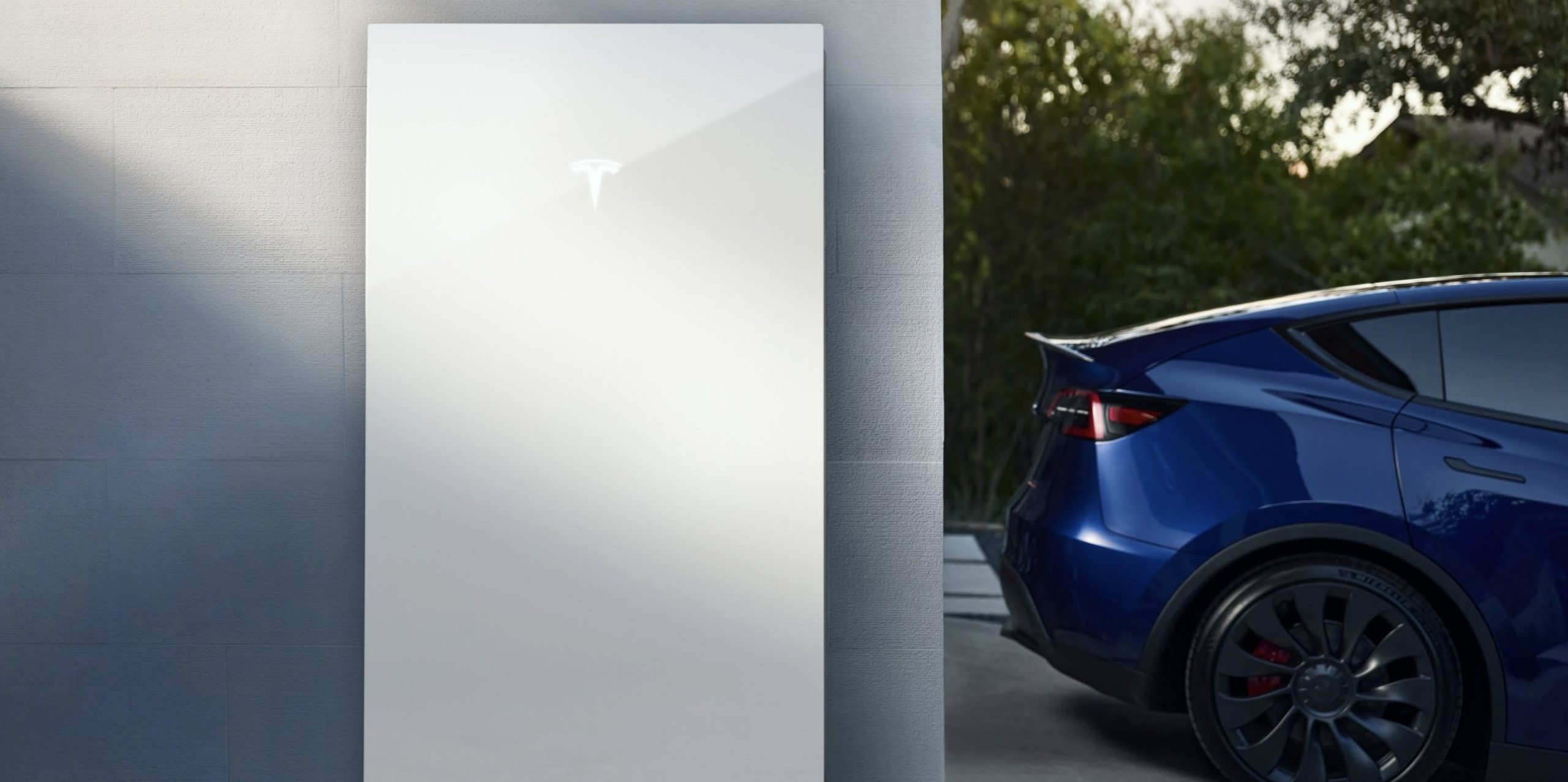
Tesla Energy held its top position in the global battery energy storage system (BESS) integrator market for the second consecutive year, capturing 15% of global market share in 2024, as per Wood Mackenzie’s latest rankings.
Tesla Energy’s lead, however, is shrinking, as Chinese competitors like Sungrow are steadily increasing their global footprint, particularly in European markets.
Tesla Energy dominates in North America, but its lead is narrowing globally
Tesla Energy retained its leadership in the North American market with a commanding 39% share in 2024. Sungrow, though still ranked second in the region, saw its share drop from 17% to 10%. Powin took third place, even if the company itself filed for bankruptcy earlier this year, as noted in a Solar Power World report.
On the global stage, Tesla Energy’s lead over Sungrow shrank from four points in 2023 to just one in 2024, indicating intensifying competition. Chinese firm CRRC came in third worldwide with an 8% share.
Wood Mackenzie ranked vendors based on MWh shipments with recognized revenue in 2024. According to analyst Kevin Shang, “Competition among established BESS integrators remains incredibly intense. Seven of the top 10 vendors last year struggled to expand their market share, remaining either unchanged or declining.”

Chinese integrators surge in Europe, falter in U.S.
China’s influence on the BESS market continues to grow, with seven of the global top 10 BESS integrators now headquartered in the country. Chinese companies saw a 67% year-over-year increase in European market share, and four of the top 10 BESS vendors in Europe are now based in China. In contrast, Chinese companies’ market share in North America dropped more than 30%, from 23% to 16% amid Tesla Energy’s momentum and the Trump administration’s policies.
Wood Mackenzie noted that success in the global BESS space will hinge on companies’ ability to adapt to divergent regulations and geopolitical headwinds. “The global BESS integrator landscape is becoming increasingly complex, with regional trade policies and geopolitical tensions reshaping competitive dynamics,” Shang noted, pointing to Tesla’s maintained lead and the rapid ascent of Chinese rivals as signs of a shifting industry balance.
“While Tesla maintains its global leadership, the rapid rise of Chinese integrators in Europe and their dominance in emerging markets like the Middle East signals a fundamental shift in the industry. Success will increasingly depend on companies’ ability to navigate diverse regulatory environments, adapt to local market requirements, and maintain competitive cost structures across multiple regions,” the analyst added.
-

 Elon Musk2 weeks ago
Elon Musk2 weeks agoTesla FSD V14 set for early wide release next week: Elon Musk
-
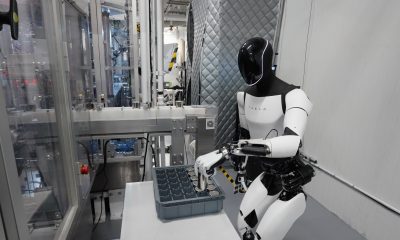
 News2 weeks ago
News2 weeks agoElon Musk gives update on Tesla Optimus progress
-
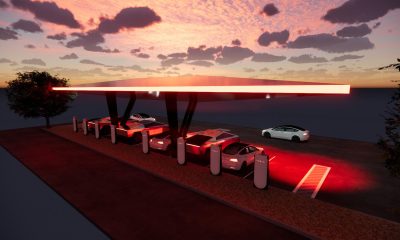
 News2 weeks ago
News2 weeks agoTesla has a new first with its Supercharger network
-
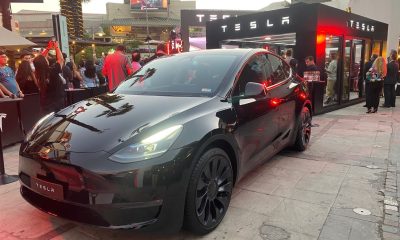
 News2 weeks ago
News2 weeks agoTesla job postings seem to show next surprise market entry
-
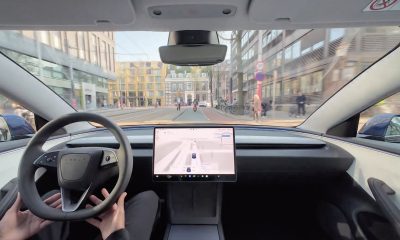
 Investor's Corner2 weeks ago
Investor's Corner2 weeks agoTesla gets new Street-high price target with high hopes for autonomy domination
-

 Lifestyle2 weeks ago
Lifestyle2 weeks ago500-mile test proves why Tesla Model Y still humiliates rivals in Europe
-
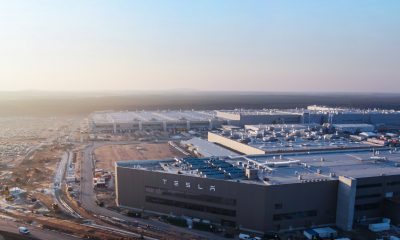
 News1 week ago
News1 week agoTesla Giga Berlin’s water consumption has achieved the unthinkable
-
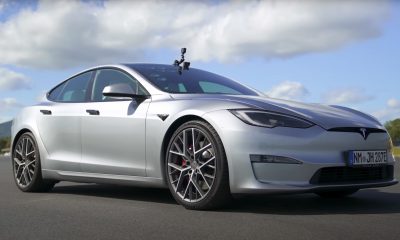
 Lifestyle2 weeks ago
Lifestyle2 weeks agoTesla Model S Plaid battles China’s 1500 hp monster Nurburgring monster, with surprising results


